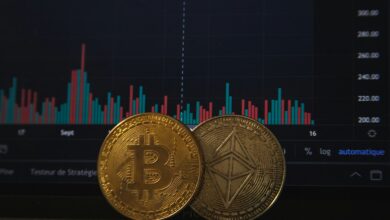Cryptocurrency arbitrage – profit from price differences

Engaging in risk-free trading opportunities requires identifying spreads between exchanges where asset values diverge temporarily. Exploiting these variations allows traders to generate consistent returns by simultaneously buying low on one platform and selling high on another, capturing the gap before market correction. Such strategies minimize exposure to volatility while maximizing gains through efficient capital deployment.
Market inefficiencies create transient discrepancies that sophisticated algorithms and manual monitoring can detect in real time. Precise execution timing is critical, as narrowing spreads reduce potential margins quickly. Understanding transaction costs, withdrawal times, and liquidity constraints ensures the net outcome remains positive despite fees that might otherwise erode profits.
Implementing cross-exchange techniques demands comprehensive analysis of order books and depth charts to evaluate volume sufficiency supporting swift trades without slippage. Combining this with robust risk management frameworks safeguards against unexpected delays or regulatory limitations impacting fund transfers. Ultimately, the ability to capitalize on momentary valuation gaps presents a valuable source of incremental income within decentralized asset ecosystems.
Cryptocurrency arbitrage: profit from price differences [Digital Finance digital-finance]
Exploiting the spread between asset values across various trading platforms remains one of the few opportunities to generate returns that approach risk-free conditions in volatile markets. By simultaneously purchasing a coin on an exchange where its valuation is relatively low and selling it on another offering a higher quotation, traders can secure gains without exposure to directional market fluctuations. This strategy demands swift execution and precise monitoring of inter-exchange discrepancies to capitalize on transient inefficiencies.
The magnitude of this spread directly influences expected returns, but practitioners must account for transaction fees, withdrawal times, and slippage which might erode theoretical profits. For instance, Bitcoin’s valuation can differ by up to 1-3% between global exchanges during periods of heightened volatility or liquidity imbalances, presenting viable arbitrage windows. However, latency in fund transfers and order settlement introduces operational risks that challenge the notion of truly risk-free earnings.
Technical considerations in cross-platform value disparity exploitation
The process involves continuous surveillance of multiple order books via Application Programming Interfaces (APIs) or algorithmic bots designed to detect and act upon favorable spreads within milliseconds. Practical case studies reveal that stablecoin pairs such as USDT/USDC often exhibit narrower gaps but enable faster settlements, while high-volatility tokens offer wider spreads offset by increased price movement risk during transfer delays. Strategic deployment of capital across geographically dispersed exchanges mitigates withdrawal bottlenecks and enhances execution efficiency.
A comparative analysis demonstrates that decentralized finance (DeFi) protocols occasionally present arbitrage prospects distinct from centralized venues due to asynchronous oracle updates affecting token valuations. For example, flash loan-enabled maneuvers have been utilized to exploit momentary mispricings within automated market makers (AMMs), securing returns without upfront capital commitment but requiring technical sophistication and gas fee optimization.
Regulatory environments also shape the feasibility and profitability of exploiting inter-platform disparities. Exchanges operating under stringent compliance regimes may impose withdrawal limits or verification delays that extend settlement cycles beyond optimal timeframes, increasing exposure to adverse price movements. Conversely, platforms with lax controls might offer quicker fund mobility at the expense of counterparty risk, demanding thorough due diligence before engagement.
In summary, capitalizing on valuation variances across trading venues demands an intricate balance of speed, cost management, and regulatory awareness. While theoretically capable of delivering risk-free yields through instantaneous buy-sell sequences exploiting the spread, practical constraints necessitate robust infrastructure and adaptive strategies to sustain consistent net gains amid evolving market dynamics.
Identifying Arbitrage Opportunities
To detect viable arbitrage scenarios, closely monitor the spread between asset valuations across multiple exchanges. A consistent and measurable gap exceeding transaction costs signals potential for risk-free gains. Prioritize platforms with high liquidity and minimal withdrawal delays to ensure swift execution of simultaneous trades, reducing exposure to market fluctuations.
Utilizing advanced algorithmic tools that analyze real-time order books enables precise recognition of fleeting imbalances in token quotations. For instance, cross-exchange scanners can highlight deviations where one venue lists a coin at a lower rate compared to another, allowing traders to capitalize before convergence occurs. Such systematic scanning enhances the likelihood of capturing positive returns.
The magnitude of spread necessary to justify engagement depends on fee structures and latency factors inherent in each trading environment. Case studies reveal that spreads above 0.5% may yield net gains after commission and slippage, especially when leveraging automated bots to minimize execution delays. Nevertheless, assessing network congestion times for blockchain settlements is crucial to avoid unintended losses.
A comparative analysis between centralized and decentralized exchanges (DEXs) illustrates distinct arbitrage mechanics. DEXs often exhibit wider valuation discrepancies due to fragmented liquidity pools and varying gas fees; however, transaction finality times can introduce risks absent in more consolidated platforms. Effective identification thus requires balancing potential yields against temporal constraints imposed by the underlying technology.
Further refinement involves tracking regulatory announcements or macroeconomic events influencing regional market behavior. Sudden policy shifts may precipitate temporary inefficiencies where identical assets trade at divergent levels globally. Incorporating sentiment indicators alongside quantitative metrics strengthens prediction accuracy concerning short-lived opportunities for costless gain extraction.
Ultimately, successful exploitation hinges on rapid detection paired with seamless capital mobility across venues. Employing diversified portfolio allocations across multiple blockchains mitigates operational bottlenecks while maintaining readiness for transient arbitrage windows. Integrating these strategies fosters disciplined engagement with minimal speculative exposure, aligning with the objective pursuit of secure incremental value generation.
Executing Cross-Exchange Trades
Maximizing returns through cross-platform transactions requires swift identification and capture of the spread existing between various trading venues. The process involves simultaneously purchasing an asset on one marketplace where its valuation is lower and selling it on another where demand inflates the valuation, exploiting transient discrepancies. This approach aims to generate near-risk-free gains by leveraging market inefficiencies without exposure to directional market movements.
A practical example can be drawn from Bitcoin’s fluctuations across major exchanges such as Binance and Coinbase Pro. When the gap exceeds transaction costs including fees and transfer times, executing a buy order on the cheaper platform followed by an immediate sell order on the pricier one yields positive net returns. However, traders must account for latency, withdrawal limits, and potential slippage which could erode anticipated margins.
Technical infrastructure plays a critical role in capitalizing on these opportunities. Automated systems employing APIs enable real-time monitoring of valuation variances, ensuring prompt execution before markets self-correct. Advanced bots incorporate algorithms that adjust order sizes dynamically based on liquidity depth to minimize market impact while maximizing efficiency. Historical data reveals that platforms with higher trading volumes often present narrower spreads but greater trade execution reliability.
Regulatory environments also influence cross-exchange operations. Jurisdictional constraints may affect fund transfers or impose delays that compromise arbitrage windows. Additionally, differences in settlement protocols between centralized and decentralized exchanges introduce operational complexities. Despite these challenges, disciplined strategies that integrate comprehensive risk management frameworks can exploit short-lived differentials, delivering consistent incremental growth without speculative exposure.
Managing Transaction Costs in Arbitrage Strategies
To secure consistent returns, it is imperative to meticulously evaluate and control transaction expenses across multiple exchanges. These costs directly impact the net gains achievable through exploiting spreads in asset valuations. Minimizing fees related to order execution, withdrawal, and network confirmations can convert marginal opportunities into lucrative undertakings.
Optimal management begins with comparing fee structures on various platforms, considering both fixed charges and percentage-based commissions. For instance, exchanges with tiered pricing may offer reduced rates for higher trading volumes, which can significantly enhance risk-free returns when properly leveraged. Additionally, some platforms impose withdrawal fees denominated in native tokens or fiat currencies; factoring these into calculations prevents unexpected erosion of capital.
Strategic Approaches to Cost Reduction
Utilizing high-liquidity venues reduces slippage–a hidden expense that arises when executing large orders against limited order book depth. Slippage widens the effective spread beyond nominal differences and can negate arbitrage advantages if not managed carefully. Employing limit orders instead of market orders further controls execution price uncertainty but may increase exposure time.
Automating transactions via smart contracts or API-driven bots can lower operational friction and enable rapid response to fleeting inefficiencies between platforms. However, automation introduces its own set of risks such as latency delays and potential software vulnerabilities. Balancing speed with reliability is crucial to preserving expected returns while maintaining low risk profiles.
A case study from Q1 2024 demonstrated that an arbitrage operation between Exchange A (fee: 0.10%) and Exchange B (fee: 0.15%) achieved net positive outcomes only after integrating a proprietary tool that optimized trade routing and consolidated withdrawals to minimize cumulative network gas costs. By avoiding frequent small transfers, the operator enhanced overall profitability despite narrow spreads averaging 0.25% during that period.
Another consideration involves monitoring regulatory changes impacting transaction costs indirectly through increased compliance measures or altered tax treatments on cross-platform movements. Keeping abreast of such developments ensures strategic adjustments remain aligned with prevailing economic conditions without compromising expected yield margins.
Avoiding Common Arbitrage Risks: Strategic Insights
To minimize exposure and secure consistent gains, it is critical to monitor the spread dynamics across multiple trading venues with precision. Variations in asset quotations between platforms create opportunities; however, the temporal lag in execution combined with withdrawal delays can erode potential returns. Prioritizing exchanges that offer rapid settlement and low latency APIs reduces slippage and ensures near risk-free strategies.
Integrating real-time data feeds and automated order routing enables traders to capitalize on transient discrepancies before market convergence occurs. Yet, counterparty risk remains a significant challenge–relying exclusively on centralized platforms without comprehensive due diligence can trigger unexpected losses due to insolvency or regulatory interventions. Diversification of liquidity sources and ongoing assessment of platform solvency are indispensable.
Key Risk Mitigation Techniques
- Latency arbitrage: Deploy colocated servers adjacent to exchange infrastructure to minimize transmission delays, enhancing execution speed relative to competitors.
- Cross-exchange transfer times: Account for blockchain confirmation periods when transferring assets between wallets; using stablecoins with faster finality can mitigate timing risks.
- Fee structure analysis: Incorporate taker fees, withdrawal charges, and network costs into spread calculations to avoid overestimating net returns.
- Regulatory landscape monitoring: Stay informed on jurisdictional changes affecting asset transfers and platform operations to preempt compliance-related disruptions.
The evolution of decentralized finance protocols presents promising avenues for lowering traditional barriers by enabling atomic swaps and reducing custody risk. As interoperability standards mature, cross-chain mechanisms may facilitate near-instantaneous value transfers, narrowing spreads but simultaneously demanding more sophisticated risk controls. This technological progression signals a shift toward more integrated markets where arbitrage windows compress yet become safer through automation.
Financial strategists should anticipate that improved transparency and enhanced surveillance tools will diminish exploitable inefficiencies over time. However, leveraging machine learning algorithms capable of adaptive pattern recognition may uncover subtle divergences overlooked by conventional models. In this context, continuous refinement of analytic frameworks coupled with robust capital management will define success in exploiting inter-exchange valuation disparities while maintaining controlled exposure.






